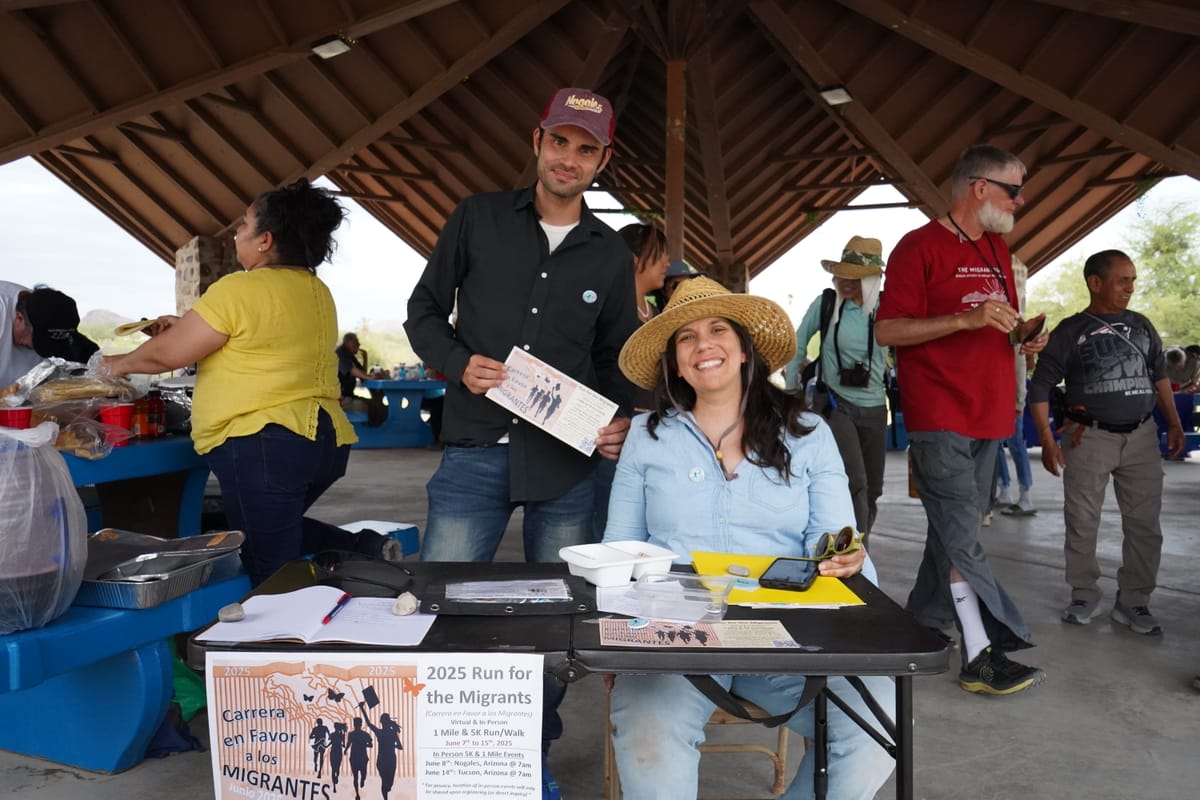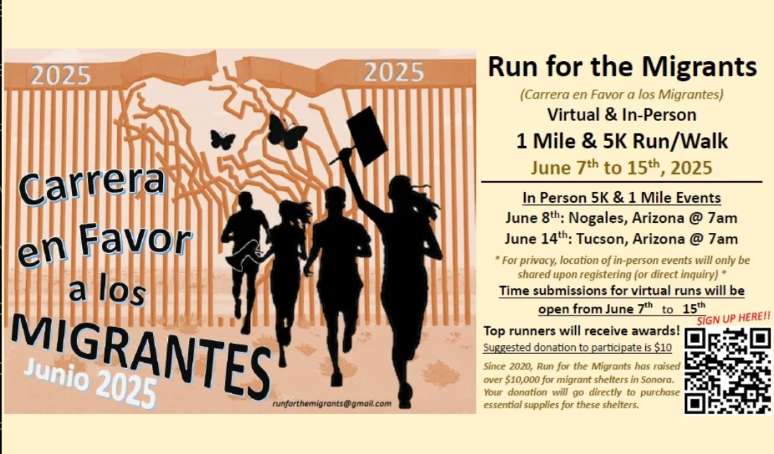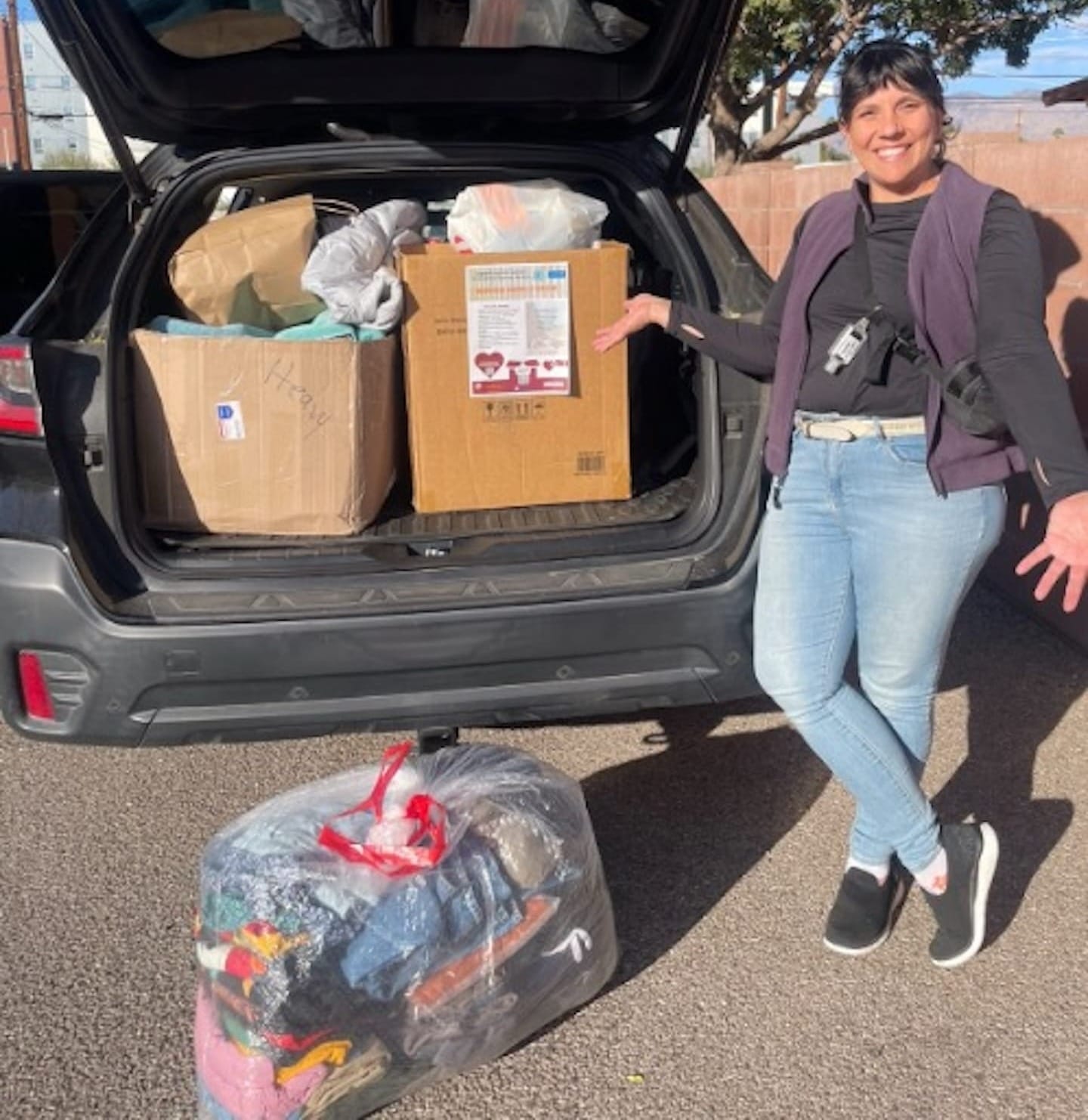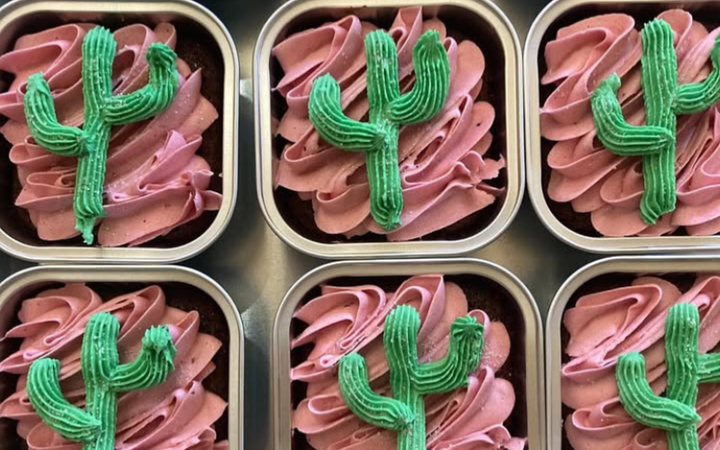Tucson run raises funds for Sonoran migrant shelters
Run for the Migrants, a fundraiser supporting shelters in Sonora, will host its first in-person event Saturday in Tucson.

Migrants risk life and limb riding atop La Bestia, “The Beast,” a roaring freight train barreling through the Sonoran Desert on a perilous journey to the United States.
The freight train, never meant for human passengers, has become a symbol of the dangerous journey countless people undertake to escape violence, poverty and persecution in search of safety and hope.
“It's dangerous and it's hot in Sonora,” said Juanita Sandoval. “One thing could go wrong and you could fall off of the train.”
La Bestia passes behind a migrant shelter in Sonora where researchers Sandoval and Hunter Claypatch worked as volunteers. Seeing and hearing the train and the people risking their lives to ride it opened Sandoval’s eyes and inspired her to do something to raise awareness of the dangerous journey migrants face while also giving back to the community.
Sandoval and Claypatch are the organizers of Run for the Migrants, a 1-mile and 5K virtual and in-person run and walk. The virtual option allows participants to complete the race at their own pace, time and location
The pair of runners see sports and physical fitness as a platform for community and activism.
“The thing that I know changed me – because usually it was men who rode right on top of the train and we'd wave at them and they’d wave back – (was the) one time we saw a mama and her baby on that train,” Sandoval said.

The train has historically been used by Central Americans, but in recent years has seen an increase in Venezuelans traveling in families.
Tucson’s Run for the Migrants will be held in person for the first time Saturday. A similar run was held last Saturday in Nogales, Arizona.
The event started as a response to the COVID-19 pandemic in June 2020, after the introduction of policies like Title 42 and the Remain in Mexico policy.
Title 42 declared a public health emergency that gave the federal government the ability to restrict migration on the grounds of health concerns. Remain in Mexico was another policy that required asylum-seekers to remain in Mexico while their case was processed.
These two policies contributed to the bottleneck of migrants waiting for legal entry into the U.S. through their asylum claims. Many migrants were coming from Central and South America, fleeing poverty, violence and persecution.
In Mexico, migrants face imminent threats like extortion from criminal organizations, physical violence, robbery and abuse, according to the American Immigration Council.
“The majority of people, they see migrants coming into the country, but they don't see them before that,” Claypatch said. “It's important to also recognize that even within Mexico, there are those shelters and those people organizations that help facilitate and help keep them safe and fed.”
The realities of the long journeys migrants take before crossing into the United States is a story that oftentimes goes untold. Some migrants cross oceans and continents before even setting foot in the U.S. It is a long journey, and one that cannot be done alone.
Migrant shelters help support people on their journey north. They provide food, clothing and a warm place to sleep. More than that, they provide migrants with the education necessary to continue their journey to the U.S.

Sandoval’s doctoral research at the University of Arizona focuses on the role of formal and informal education in towns with migrant shelters in Sonora.
“I started noticing how they were set up in a way that educates not just migrants, but the community, about immigration,” Sandoval said. “I'm writing about how these spaces are interconnected, and what do they teach migrants and the community about this phenomenon that is migration, and how are they set up to do that? What sort of events do they have? Things like that.”
She recalls an event in the Sonoran city of Altar, where educators set up a blue water tank usually placed in the desert by No More Deaths for migrants traveling through the desert. They told migrants about the purpose of this tank: clean water to drink in an area of scarce water.
“Through the systems in place here in the United States, very few people actually get a clear understanding of what is going on with migration,” Claypatch said. “I think just letting it be known that these shelters are in place on the other side of the border and that they need help because migration is a global phenomenon that is not going to stop anytime soon.”
Claypatch’s archaeology dissertation research centers around the pre-colonial populations that lived on both sides of the border, specifically the Hohokam and Tohono O’odham tribes. He studies the ceramics and the material that moved through the region of the modern border.
“I see how things like ceramics are fluid across these regions and I think that really kind of inspires me ... to find ways to deconstruct the border as it stands today,” he said. “I've seen the fluidity of the border region through deep time and just understanding that people move, people migrate and that's just kind of a natural human state.”

The number of migrant encounters by Customs and Border Protection is down significantly from previous years, and Sandoval said that shelters in Sonora are at a standstill, with hardly any migrants passing through right now.
The two were in Agua Prieta two weeks ago and noted that migration in the area has halted.
“One thing I think that's important to remember is how quickly these things can change, like Sasabe for example,” Sandoval said.
Sasabe, Sonora, is a border town southwest of Tucson that, according to CBP, was affected the most in 2023. Humanitarian organizations reported hundreds of arrivals of people seeking asylum during this time. These organizations were left to feed, clothe and shelter migrants with no resources from Border Patrol in the area.
“All of a sudden it was inundated,” Sandoval said. “So one thing I think I've noticed with the shelters is that, even though it's slow right now, that could change any day.”
Registration for Saturday’s in-person event can be found here. The location of the in-person event will be shared following registration or via direct inquiry. People interested in participating in the virtual run and fundraiser can sign up through Sunday.
Organizers are suggesting a $10 donation for participation in Saturday’s run, which will be used to help support migrant shelters in Sonora purchase clothing, toothbrushes, nonperishable goods, electrolyte powder and other items. In-person participants can also donate items instead of a financial donation. Previous events have benefited shelters in Agua Prieta, Caborca, Altar and Sasabe.
“This funding is how we get a lot of the supplies” to take to Sonora,” Sandoval said. “I think when you go to these spaces and you actually interact and meet with the volunteers and also the migrants themselves, you see the humanity and dignity in what they're trying to do.”
Susan Barnett is Deputy Editor of Tucson Spotlight and a University of Arizona alum. Contact her at susan@tucsonspotlight.org.
Tucson Spotlight is a community-based newsroom that provides paid opportunities for students and rising journalists in Southern Arizona. Please support our work with a paid subscription.



